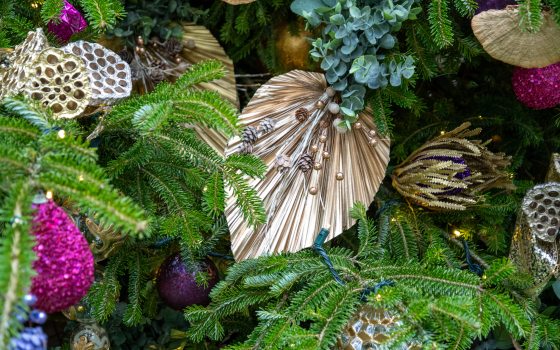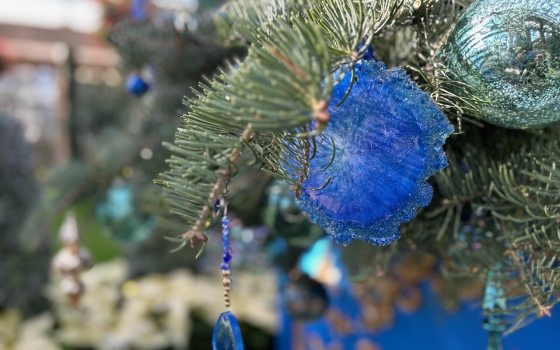Need a summer reading list? How about one packed with insightful, interesting books hand-picked by Longwood staff? From nature-based classics to science summer reads, a take on enviro-history to read-aloud-ready children’s selections, and a selection from our new (and free!) summer author series, these engaging books all shed a little light on what fascinates our staff; what drives their work here at Longwood; and what books have shaped their work, studies, lives, and passions. Read on to gather some tailored, top-notch picks from a variety of Longwood staff for your summer reading list—or your year-round to-be-read list.
Nature-Based Classics
They’re classics for a reason—add some well-loved titles to your list … or to your child’s summer break reading list.
Walden by Henry David Thoreau (1854)
Recommended by Director of Continuing Education Timothy Gould
A reflection on Thoreau’s time living simply among his natural surroundings while spending over two years in a cabin on Walden Pond, this book shares both scientific observations and poetic musings and offers an introspective, spiritual, and thoughtful reading experience about the wonder found within the natural world.
“I think many would consider this to be a seminal work in conservation literature and so many of the themes still ring true today,” says Gould. “I love how Thoreau uses his observations of the changing seasons, wildlife, and solitude to explore deeper truths about life, personal growth, and the natural order. The book emphasizes how nature can be a source of wisdom, inspiration, and clarity in contrast to the distractions of modern society, which is something we're trying to help people realize through our Continuing Education programming on a daily basis.”
With classes on well-being, gardening, creative and culinary arts, floral design, and more, students at Longwood can find unique and fun ways to do just this—relax, take a moment to breathe and enjoy nature, and slow down.
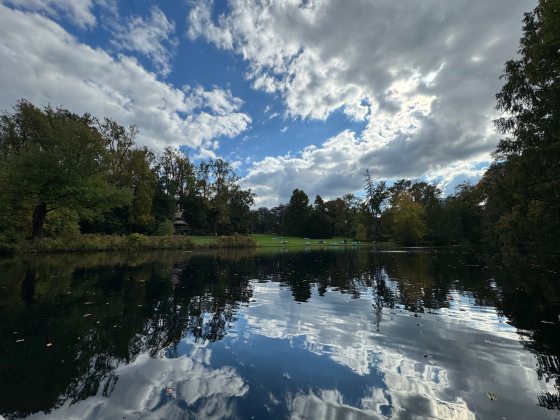
Perhaps our Lake District is the perfect place for your own reflections on nature and life. Photo by Brian O’Neill.
The Lorax by Dr. Seuss (1971)
Recommended by Director of School and Youth Programs Heather Drzal
Chronicling the life of the Lorax, who “speaks for the trees” and confronts the Once-ler, a business magnate who causes environmental destruction, this whimsical, colorful, and impactful classic children’s book explores themes of environmental activism, climate change, pollution, and more.
“The Lorax helps teach children (and adults alike!) about conservation and stewardship of the environment wrapped up in a fun story,” says Drzal. “It gets children thinking about what they can do at their home or in their local community to help the natural world because after all, as the book shares, ‘unless someone like you cares a whole awful lot, nothing is going to get better. It’s not.’”
This book resonates for those of all ages, as it breaks down timely environmental issues into a timeless tale. If you read it when you were a kid, take a moment to reread it now and see how you connect to it even today. Looking for more children’s book selections? Read on!
Science Summer Reads
Look at natural beauty through an expert scientific lens with these unique reads—recommended to you by Longwood experts.
Swampwalker's Journal by David M. Carroll (2001)
Recommended by Director of Continuing Education Timothy Gould
Embark on an unforgettable, illustrated, year-long journey through wetlands and learn why they are so important to not only Carroll’s life but to all lives on earth.
“I completed my MS in wetland ecology and enjoy this book as a meditative look at the critical role that these environments play in both natural and human systems,” says Gould. “The book explores natural rhythms and the connections between people and the natural environments around them, and advocates for readers to slow down and appreciate the incredible processes occurring every day.”
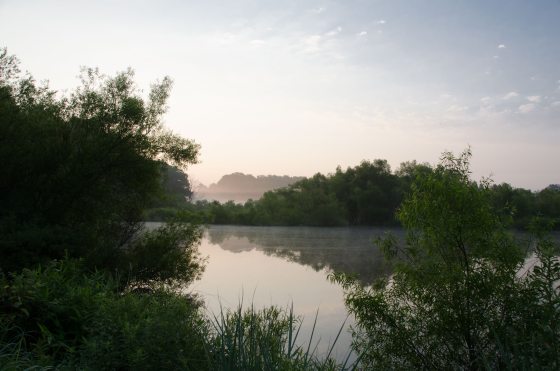
Approximately 65 percent of Longwood’s 1,100 acres is comprised of natural lands including wetlands … and they play an important role in offering a home to wildlife, protecting natural resources, and providing meditative, beautiful views. Photo by Susan L. Procario.
Braiding Sweetgrass: Indigenous Wisdom, Scientific Knowledge, and the Teachings of Plants by Robin Wall Kimmerer (2013)
Recommended by Associate Vice President of Science Kate Santos, Ph.D.
Longwood’s pick for the second annual Community Read in 2015, Braiding Sweetgrass explores the importance of our relationship with plants, the reciprocal relationship between humans and the land, Native American culture and storytelling, and the science of botany—all with beautifully descriptive language and personal anecdotes that connect the reader both with Kimmerer and with her fascinating thoughts on the natural world. There is something for every reader in this title, and so much heart that you’ll find yourself lost in Kimmerer’s unique mind and world.
“Kimmerer deftly weaves together science, indigenous wisdom, and plants into a poetic work that reminds us of the value of the reciprocal connections we have with one another and to the Earth,” says Santos. “Braiding Sweetgrass was a treasure to read and continues to inspire me and my work here at Longwood.”
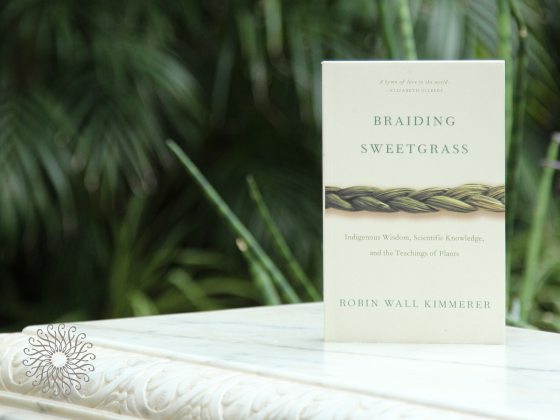
In our 2015 Community Read, we explored titles that made us think about our relationship with the natural world. Read more about our current 2025 Community Read selections, which we are enjoying and celebrating with local libraries and community members. Photo provided by Longwood Gardens.
Botany of Desire: A Plant’s-Eye View of the World by Michael Pollan (2001)
Recommended by Associate Vice President of Conservatories Chad Davis
In this fascinating book on plant science and natural history, Pollan presents case studies mirroring four types of human desires that are reflected in the way that we selectively grow, breed, and genetically engineer plants. Each of the book's four parts discusses a different plant and a corresponding human desire for which it historically has been cultivated: the apple for sweetness; the tulip for beauty; cannabis for intoxication; and the potato for control.
“I found this book incredible as a young horticulturist,” says Davis. “The angle that plants were training us to tend to them and move them around the world blew my mind as a 20-something-year-old college student.”
Enviro-history
Into historical deep dives? Give your historical reading list a natural twist with this plantiful read.
Early Camellias in Louisiana: 1825-1860: Long-Lost Treasures Rediscovered By F. Wayne Stromeyer, Trenton L. James, photography by John L. DiLeo (2023)
Recommended by Director of Library & Information Services Hannah Rutledge
Beautifully designed and filled with gorgeous photography, this book is a trove of personal stories, world history, and, naturally, botany. Readers are provided detailed descriptions of early-blooming camellia varieties, including their origins, characteristics, and growing requirements, grounded in both historical research and practical experience. The beginning of the book provides a historical overview, detailing how camellias were introduced to Louisiana, their early cultivation, and the societal impact of these plants. The focus then turns to the different varieties that were popular during the period, the gardening techniques used, and the cultural significance of these plants in Southern society.
“This book has something for everyone,” says Rutledge. “As a huge camellia lover myself, and originally from the South, this was a most enjoyable journey into the cultural and botanical history of this flower.”

“Longwood has a renowned and historic camellia collection, and this book provides a fantastic perspective of the flower,” says Rutledge. “I have enjoyed going into Longwood’s Camellia House during peak blooms (typically January–March) to see how our varieties are similar—or different! —than those pictured in this book. It’s a fun way to learn more about this magnificent flower.” Photo by Amy Berg.
Summer Read-Alongs and Read-Alouds
For quiet summer evenings, days at the beach, midday picnics, or bedtime, these selections are perfect to get kids interested in nature’s many secrets. The book selections below are recommended by our Director of School and Youth Programs Heather Drzal, who took inspiration both from the programs she oversees—from field trips to in-school programs—and from her own family life.
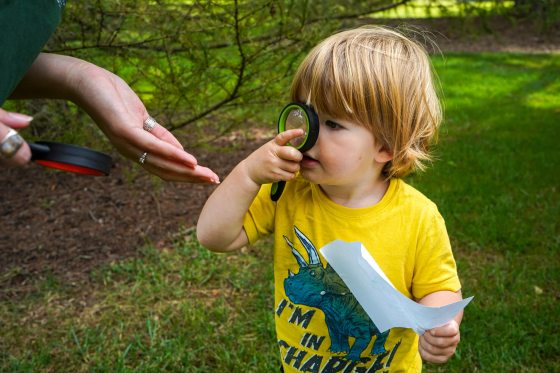
These selections help get kids interested in nature’s many secrets. Photo by Carol Gross.
The Secret World of Plants: Tales of More than 100 Remarkable Flowers, Trees, and Seeds by Ben Hoare (2022)
In this beautifully illustrated book, learn how seagrass flowers underwater, how the Venus flytrap counts to make sure it catches its prey, why some tulips used to cost more than a house, and more! This fascinating book explores the vast plant kingdom and explains how plants work, as well as the weird and wonderful relationships they have with animals.
“This book is great for children around the ages of 7 and up who want to dig deep into the world of flowers, trees, and seeds,” says Drzal. “Using beautiful illustrations and photography, it showcases the ins and outs of the plant science world including all the awesome things that make plants cool. A great follow up to this one is Weird and Wonderful Nature and Nature’s Treasures, both by Ben Hoare.”
My First Book of Houseplants by Duopress Labs (2021)
A beautiful introduction to the world of houseplants for babies and toddlers, this book helps them to develop a connection with the natural world.
“This is a great book for the littles!” says Drzal. “Geared towards babies and toddlers, this board book helps children learn about houseplants and gives parents a great idea of what they might be able to grow in their home.”
The Tiny Seed by Eric Carle (1970)
This delightful, bright, and colorful Eric Carle classic tells of a tiny seed that travels with the wind, survives perils, germinates, and grows into a flower, producing more tiny seeds.
“My children and I enjoy this book because it takes you on a journey around the world and through the seasonal changes,” says Drzal. “It teaches children about the parts of plants, what plants need to grow, and how seeds travel from place to place.”
More Engaging Reads
Want to tap into the bookish side of Longwood—and meet the authors? Join us for our new (and free!) summer author series, kicking off June 10! “The featured books in this author series were chosen to highlight authors, academics, and professionals at the cutting edge of the many fields that impact modern horticulture and public gardens,” shares Gould. “Readers should look to these selections for an inside glimpse at some of the minds at the forefront of moving gardens forward; from cut flower farming to roses, and from oak trees to grand-scale fountain design to fascinating landscape architecture, our summer author series has something for everyone!”
One of our summer author series selections in particular has inspired Vice President of Marketing and Communications Nick D’Addezio. “In Fountain Safari, James Garland takes you through some of the most impressive fountains in the world,” says D’Addezio. “While it can be read from cover to cover, the beauty in each story stands on its own. From the classic charm of the Trevi Fountain in Rome to the modern marvel of the Rain Oculus in Singapore or the community work of art of the Crown Fountain in Chicago, each story shares the uniqueness and history of the fountain along with striking visuals. Of course, it’s wonderful to see Longwood Gardens has a place in the book with our Main Fountain Garden.”

The author of Fountain Safari, James Garland, is an acclaimed landscape architect and water designer who was an integral part of our Main Fountain Garden revitalization project in 2017. Our very own Main Fountain Garden is featured in this stunning book. Photo by Holden Barnes.
Editor’s Note: Hungry for more nature reads? Check The Garden Shop in-store and online for a rotating selection of books on gardening, natural beauty, wildlife, conservation; books for children; cookbooks; and more. Want to write your own nature stories? Join us for our upcoming learning experience, Stories in the Gardens, and go from reader to writer and back again.

